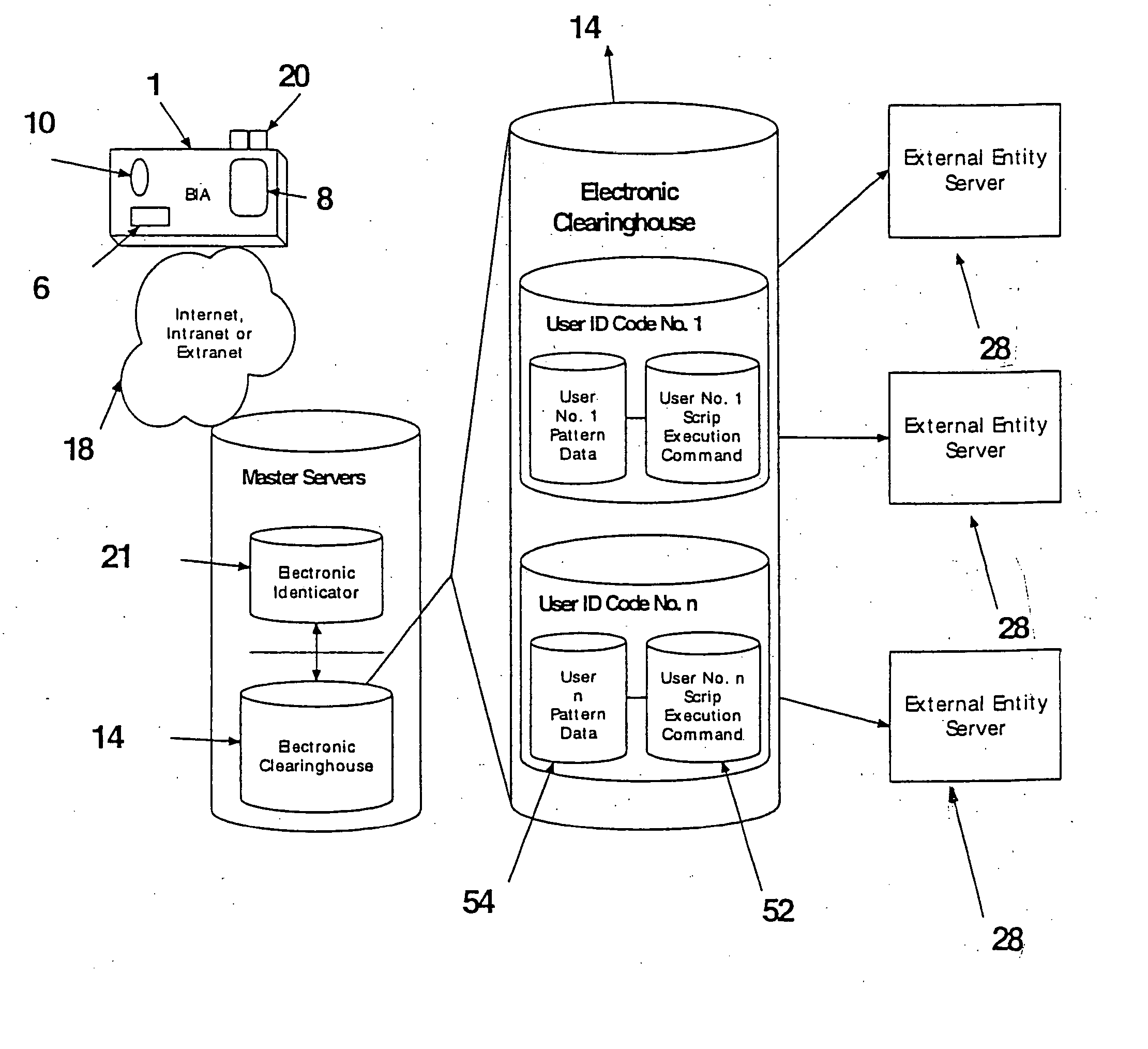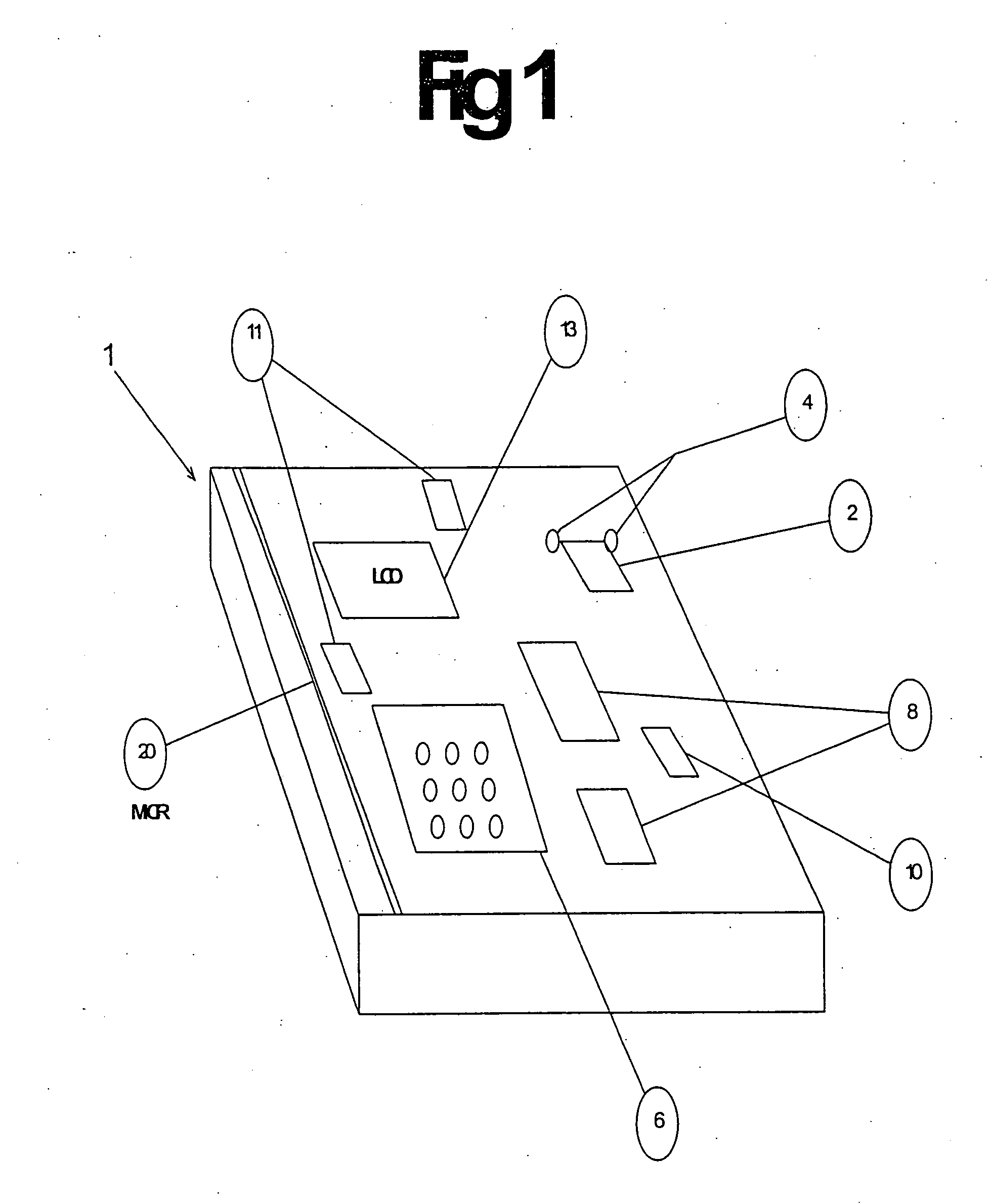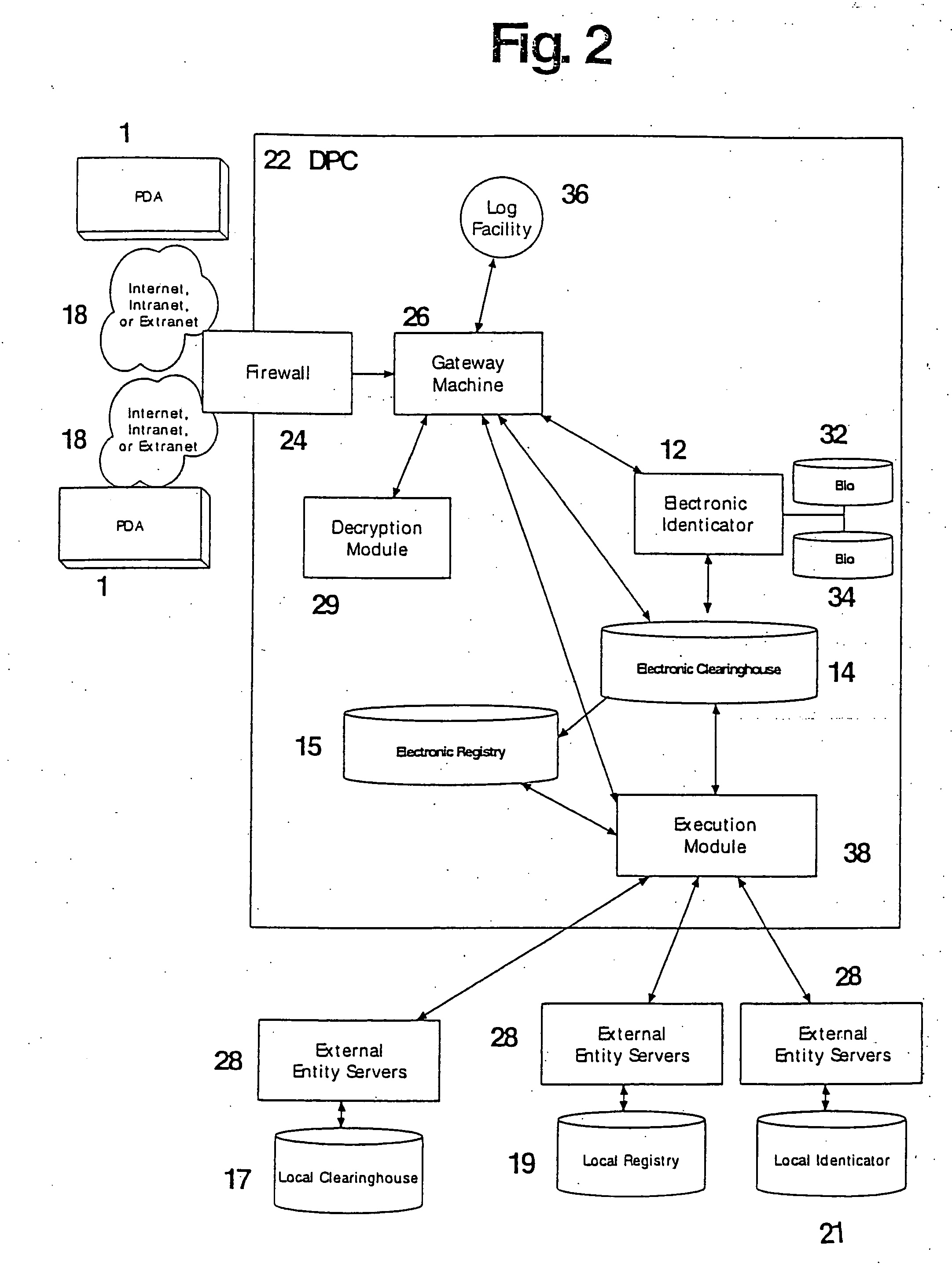System and method for tokenless biometric electronic scrip
a biometric and electronic scrip technology, applied in the field of electronic computer systems, can solve the problems of absorbing the cost of replacement to consumers, unable to meet the needs of consumers, and unable to produce and distribute such tokens to scrip supporters, etc., and achieves the effects of less cumbersome, less cumbersome, and more spontaneous
- Summary
- Abstract
- Description
- Claims
- Application Information
AI Technical Summary
Benefits of technology
Problems solved by technology
Method used
Image
Examples
Embodiment Construction
[0053] The invention provides a tokenless biometric method for a scrip supporter to authorize a scrip transactions using scrip accounts either at the retail point of sale or over the Internet. It is the essence of this invention that the Scrip Supporter not be identified through the direct use any man-made personalized tokens to effect a scrip transaction. A computer system and an Identicator are used to accomplish these goals.
[0054] A biometric sample is defined as any distinct human characteristic which can uniquely identify an individual. A biometric sample includes any of the following: a fingerprint or finger image, a voice print, a retinal scan, an iris scan, a facial image, and the like.
[0055] One such biometric sample is registered with the computer system and another is provided when the Scrip Supporter conducts a scrip transaction. These two biometric samples are compared by an electronic identicator (electronic Identicator or Identicator), which is a computer that uses ...
PUM
 Login to View More
Login to View More Abstract
Description
Claims
Application Information
 Login to View More
Login to View More - R&D
- Intellectual Property
- Life Sciences
- Materials
- Tech Scout
- Unparalleled Data Quality
- Higher Quality Content
- 60% Fewer Hallucinations
Browse by: Latest US Patents, China's latest patents, Technical Efficacy Thesaurus, Application Domain, Technology Topic, Popular Technical Reports.
© 2025 PatSnap. All rights reserved.Legal|Privacy policy|Modern Slavery Act Transparency Statement|Sitemap|About US| Contact US: help@patsnap.com



